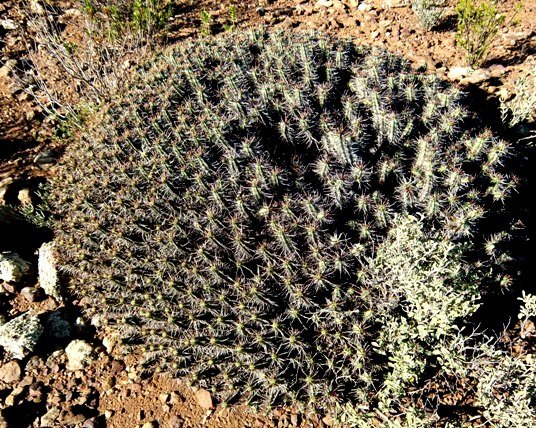Euphorbia heptagona... guess my age

This large, flat dome formed by a compact cluster of Euphorbia heptagona stem tips must be nearly a metre wide. To achieve these dimensions took the plant many years. How old could it be?
Succulent herbaceous plants have no above-ground growth rings like trees that can be counted to determine the age of the plant. The study of herb-chronology (related to dendrochronology, the study of determining tree age from annual rings), does allow for the investigation of woody layers that form in the roots of some herbaceous perennials. While above-ground parts of such plants may die off seasonally or over a period of years, the roots of certain herbaceous species are not only more durable, but have accumulative woody layers.
The age of a ginseng plant can for instance be determined by counting the number of stem scars on its rhizome. Durable root layers may not start immediately from a plant’s early youth, so the counting of root layers may yield only a lower estimate of a plant age.
In some Euphorbia succulents, such as this one, new stems are added continually in the centre during the lifetime of the plant, while the old ones pushed to the side persist to form the shape seen here. Counting stems is unlikely to be much help in learning which birthday is being celebrated (and on what day), but whether it has discernible root layers down below would be interesting.
Some might guess that on average one ring of stems has been added per annum (and all stems are still present). This could lead to an exercise proceeding as follows: Count the stems from the centre to the perimeter on the (average) radius, deduct the (average) number of later stem branches that inflates this number, divide by the average stem thickness after correcting for the average interstem space to arrive at a guesstimate... or numerical fruit salad (Wikipedia; www.fws.gov).

